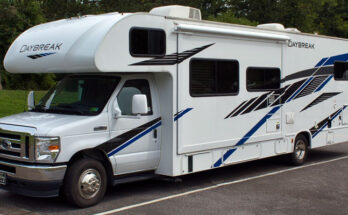Let us get one thing straight from the jump. Gambling without a proper bankroll management strategy isn’t gambling — it’s donating. Too many bright-eyed beginners join gambling sites hoping to win big just to end up with empty pockets. But you can always avoid this.
First things first. Before you even think about placing your first bet, do yourself a favor and spend some time reading reliable reviews about local and international casinos. You can check European sites on mejores casinos en Andorra (best casinos in Andorra) or stick to US resources, but you should always do your research first.
With that step out of the way, let’s jump to the really important part — how to keep your money in play and maybe even walk away a winner.
Understanding Bankroll: Your Gambling Lifeline
Your bankroll isn’t just money — it’s your gambling lifespan. It determines how long you can stay in the game, how much risk you can absorb, and ultimately, whether you’ll live to gamble another day.
A bankroll is the total amount of money you’ve dedicated specifically to betting. Not your rent money. Not your grocery budget. Not your kid’s college fund. We’re talking about disposable income that, if lost, won’t send your life into a tailspin.
Here’s a hard truth: You should be mentally prepared to lose your entire bankroll. If that thought makes you break into a cold sweat, you’re allocating too much.
Setting Your Gambling Budget
First, you need to establish how much you can comfortably set aside for gambling activities. This varies widely from person to person, but a good rule of thumb is:
- Calculate your monthly disposable income (what’s left after all bills and necessities).
- Take no more than 5-10% of that amount for your gambling budget.
- Consider this money “spent” the moment you allocate it to your bankroll.
For example, if you have $500 of disposable income monthly, your gambling budget should be $25-$50. Seems small? Good. Starting small is smart.
The 1% Rule: Your Betting North Star
Here’s where the rubber meets the road. The single most important bankroll management principle is the 1% Rule. Never — ever — bet more than 1% of your total bankroll on a single wager. Got a $500 bankroll? Your standard bet should be $5. It’s that simple.
This rule does two critical things:
- Protects you from catastrophic losses.
- Ensures you can weather the inevitable losing streaks.
Even professional gamblers go on brutal cold streaks. The difference between them and the amateurs? Pros have the bankroll to survive until variance swings back in their favor.
Tracking: The Habit That Separates Winners from Losers
You’d be surprised how many gamblers have absolutely no idea whether they’re up or down overall. Don’t be that person. Get a simple notebook or use a note app on your phone to record:
- Date
- Casino/site
- Game played
- Buy-in amount
- Cash-out amount
- Net win/loss
This isn’t just about knowing your overall performance — it’s about understanding which games are treating you better and identifying patterns in your play.
The Psychology of Bankroll Management

Bankroll management isn’t just math — it’s your top defense mechanism. The casino has spent millions designing an environment that messes with your head. The colors, the sounds, the free drinks in physical venues — it’s all carefully calculated to override your rational brain.
Your bankroll strategy needs to account for this reality with some hard rules:
- No credit cards. Ever. Period.
- Set time limits in addition to money limits.
- Take scheduled breaks to clear your head.
Keep in mind, your mental game needs to be as disciplined as your money management.
Growing Your Bankroll: The Compound Interest of Gambling
If you’re serious about gambling, you need a strategy for growing your bankroll over time. Smart players use a version of the 50-30-20 rule:
- 50% of winnings go back into your bankroll;
- 30% get saved or invested elsewhere;
- 20% can be spent as a reward.
This approach ensures that winning sessions actually improve your position, not just fund longer losing sessions.
Final Thoughts: When to Take a Step Back
Sometimes, the smartest gambling move is not gambling at all. If your bankroll has taken a significant hit (let’s say 30% or more), it might be time to take a break, rebuild with fresh funds from your regular income, and reassess your approach. There’s no shame in stepping back. In fact, it’s what professional gamblers do all the time when variance turns against them or when they notice their decision-making deteriorating.
Be honest with yourself if you notice:
- Gambling with money you can’t afford to lose.
- Feeling anxious or desperate while playing.
- Lying to others about your gambling activities.
- Neglecting other responsibilities to gamble.
Any of these are red flags that your relationship with gambling needs reevaluation. Whenever you wager real money, keep in mind that successful gambling isn’t about massive wins — it’s about longevity. Now get out there, protect your chips, and may the odds be slightly less against you than the next guy.









